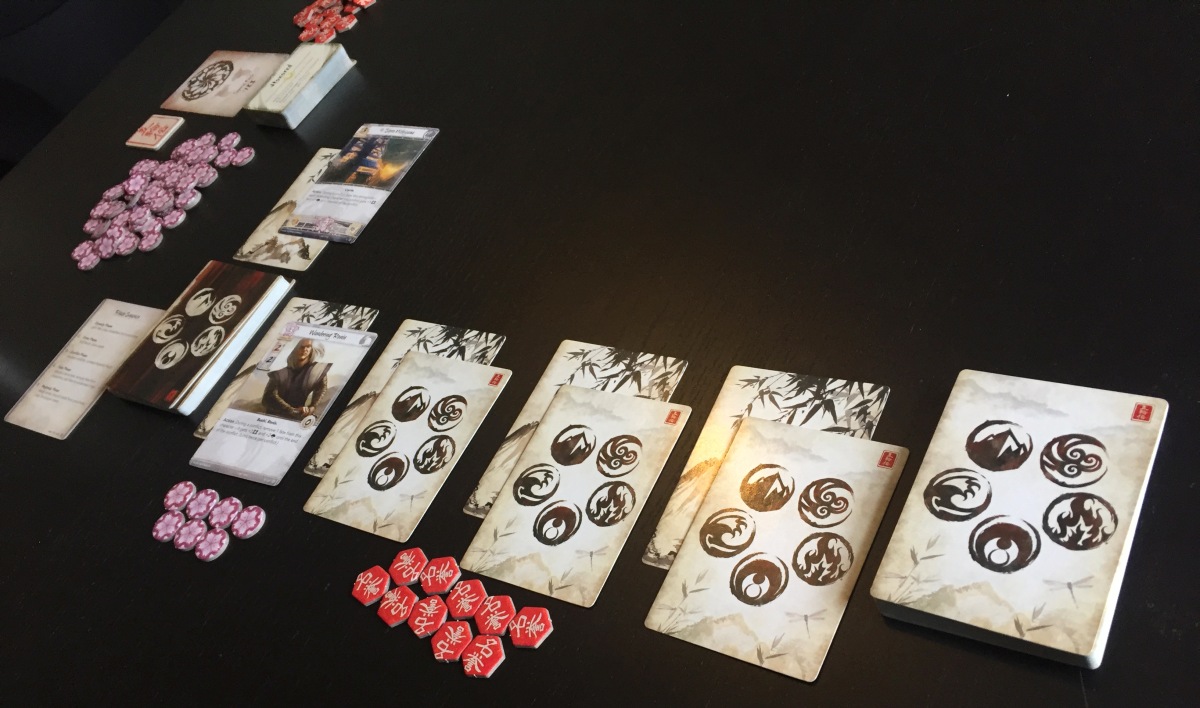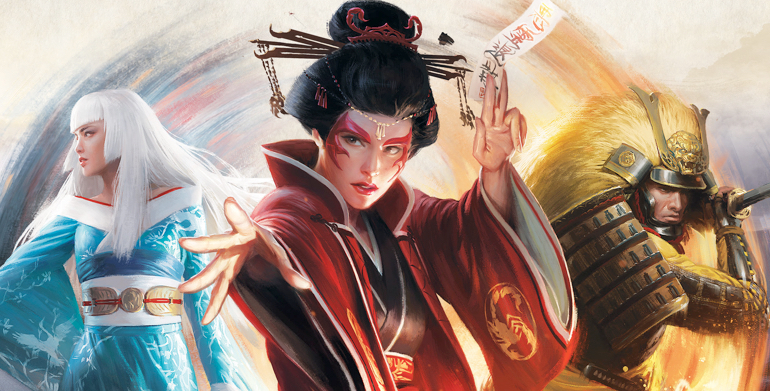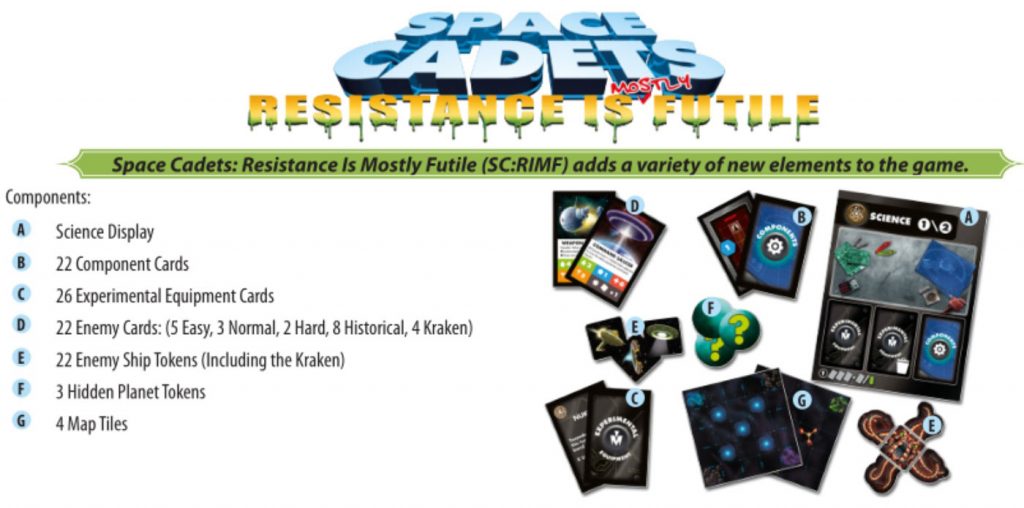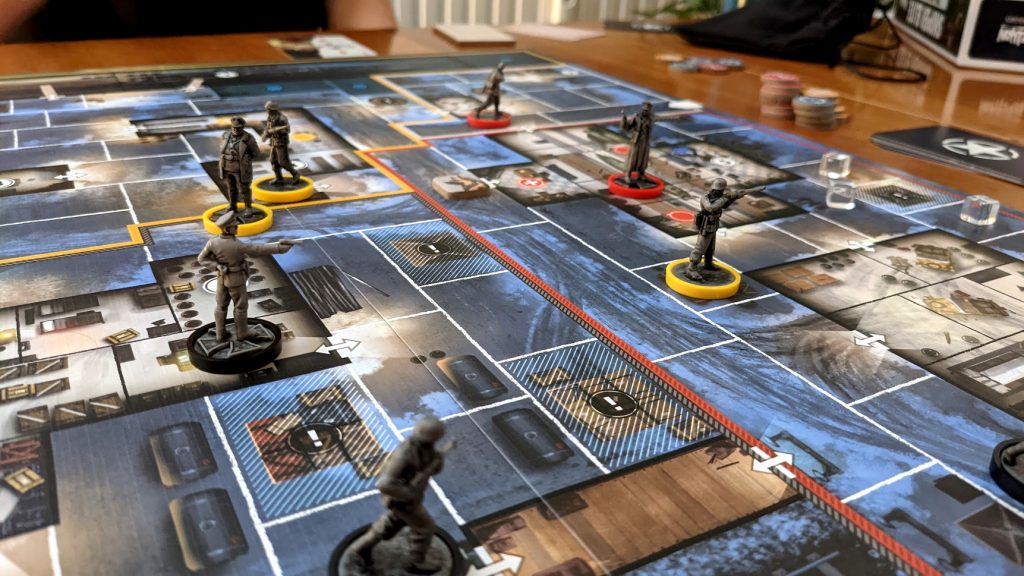Quinns: Phew! I birthed two of the year’s toughest reviews last week, but there’s no rest for the wicked. Today we’ve got some coverage that a lot of people have been asking for.
Remember when Fantasy Flight Games bought the rights to 1996 collectible card game Netrunner and released a new edition that took over my life? Well, Legend of the Five Rings (henceforth “L5R”) is them doing that again. This was originally a 1995 card game, but any week now shops will receive FFG’s beautimus new edition using the Living Card Game business model of releasing fixed expansions rather than randomised boosters. This makes it cheap compared to most collectable card games, albeit still expensive compared to board games.
In other words, we could have a hit on our hands. Have Fantasy Flight folded the original game’s steel into a captivating card katana?
Let’s find out.
SO, in L5R two players sit down to fight a conflict between two clans of Rokugan, a world easily imagined as “Japan meets Game of Thrones”. If you’ve played Magic: The Gathering or Hearthstone then the basics will be familiar. Players spend resources to put character cards into play, and then attack and block with those characters.
In all other respects, sitting down to play L5R after learning Hearthstone is like riding a biycycle and then climbing into the driver’s seat of a miniature submarine. You’ll run your fingers over all the displays and dials, giddy but out of your depth, and perhaps fretful at just how deep you’re expected to go.
First, players in L5R each select a stronghold card and five provinces. The provinces are placed face-down and the stronghold sits atop one of them, as seen above.
To win the game a player first has to use their characters to attack three provinces with enough force that they “break”, which unlocks the stronghold as an area you can attack. By then attacking the stronghold and breaking it like a big stone egg, you win the game.
Those province cards that you picked? They’re essentially traps that fire whenever your opponent attacks.
Next, let’s put both of our decks out. That’s right. Each player has TWO DECKS. CAN YOU BELIEVE?
THERE THEY ARE. BELIEVE IT.
The darker one on the left is your Conflict Deck, which is used in the normal manner See below:
You draw a hand of cards from it that might include characters, events or equipment, and you can parachute these cards onto the table whenever you like.
Since you can play these cards at almost any time, this immediately creates a challenge of wanting to play cards at the last possible moment to give your opponent no time to duck the consequences, without waiting so long that the opportunity leaves the table (probably because your opponent played a Conflict card of their own).
This immediately makes L5R very, very interactive. Think of it like tennis. There’s a basic back-and-forth structure during rounds where I attack, then you attack, and so on, but this hand of cards enables you to smash the ball, do a dropshot or dictate the tempo.
The white deck is your Dynasty Deck, which contains your coolest politicians and deadliest warriors. These cards are dealt out onto your four provinces (see above) where they function as a second hand of cards that can only be purchased at the start of a turn. Also, if your opponent is petrified of one card in particular then they can make a concerted effort to break that province and force you to discard the card resting on top of it. But ALSO, that might mean you neglect to buy a really good character so your opponent attacks there so they trigger the province’s ability that you know is going to be a problem for their deck. WHEELS WITHIN WHEELS.
Both Conflict and Dynasty cards are paid for using Fate, which are the pretty little lotus tokens. Each player gets a set quantity of Fate each turn (a ‘bouquet’, if you will), and you almost always have more cards than you have Fate, which immediately creates a challenge of figuring out where to spend it.
…Which brings me to the rule that’s going to make some readers’ heads explode. When you play a character, you also decide how much additional Fate to place on the card. See below.
At the end of each turn, you remove one Fate token from every character. If the character has no Fate tokens, their time on this fretful stage is over and they are, at last, removed from play.
Now, obviously this means that if I don’t put any fate on my characters I can play more of them, buying me a single, absolutely brutal turn, but if you survive it, I’m in deep trouble. But putting lots of fate on a few good characters also makes them a juicy target for poisoning and assassination-type cards, which can make for heartbreaking losses. But again, this is an amount of freedom I’m not used to having from a card game. Not for nothing, L5Ris a CCG that remembers to be a clever game.
After you’ve waddled through a confusing first couple of games you’ll quickly realise that the randomness inherent in the genre simply feels like weather, rather than something that restricts your options. You always have traps, you always have characters, you always have events and you always have the money to pay for them.
Which is good, because this is a long-ass game. Matches can last 90 minutes for new players, or 45 minutes if you’re experienced. Randomness would have destroyed it.
Next, let’s add Honor and Honor Dials to our table. Oho! Did you think we were done with set-up, my student? You make your sensei laugh!
Honor is probably my favourite mechanic in the game, because it’s a resource that does nothing. Each turn players secretly bid using their dials, reveal the bids, and draw that many Conflict cards, but the higher bid has to pay the difference in Honor to their opponent. Duels let players bid honor and add it to their character’s stats, enabling you to win a duel if you fight dishonorably. Also, a ton of cards let players snatch a little extra honor here and there.
And all of it does nothing! Nothing at all. Oh- but if you ever run out of honor, you instantly lose the game. And if you ever reach 25 honor, you instantly win.
Finally, there are the philosophical Five Rings to think about: Earth, Fire, Wind, Water and Void. When you declare an attack you also select a ring which enacts a power if you win. If you choose Void, you can remove Fate from your opponent’s characters. If you choose Earth, you can force them to discard a card while you draw one. That kind of thing.
There are other rules I won’t go into, like Holdings, claiming the Imperial Favor and honoring and dishonoring individual characters, because it all boils down to this: Learning L5R takes time. But once you’ve learned it, it offers players more tactical options than any other game of its ilk. It’s chin-stroking and slow, yes, but also elegant. It wears its theme – a political conflict fought across years – comfortably, like a layered kimono.
And speaking of elegance, my god, I like looking at this game. The card backs and templating are the nicest of any card game I’ve ever seen. Which is something of a saving grace, because my god, this game looks troublingly messy mid-match, don’t you think?
Though I should probably be talking about the front of the cards and not the back, eh? On that note, I love getting to spend more time with the seven Great Clans of Rokugan. I used to play the old L5R roleplaying game and this game reminded me why. The noble artisans of the Crane clan! The treacherous plots of the Scorpion clan. The thuggish Crab, and the nomadic, empurpled Unicorn.
There’s a wealth of tactics packed into the core set, too. Every clan feels distinct already, with the Dragon clan demanding that players field a limited number of enlightened, multi-faceted monks, or the Lion clan offering all-out aggression. The core set contains some 244 cards, most of them unique, all of them lovely to look at, and lets two players immediately begin playing and seeing what each clan is about. I’ve seen some complaining online that you need two core sets to build a “real” deck and three core sets to build a competitive one, which in this case I think is a pretty silly thing to be upset about. If you want to know more, see Appendix A.
(Yes, this is the first SU&SD review with appendices. God help me.)
So, let’s do a mid-review recap. What have we got here? Well, an absolutely terrible game for people just looking for a funtime card game, since it takes about an hour to learn, two more hours to BEGIN to feel comfortable, and then another four hours for all the mechanics and cards to start to coalesce and you’re truly playing, and not just constantly thinking “But what about this option?”, your gameplan sputtering like a misfiring motor.
But this same involved ruleset should be deeply appealing for people looking for their next game to play often, at a casual or competitive level.
This isn’t a card game promising rich complexity- it’s already there. I attended a tournament where each of the hundred attendees played with just one core set (yes, the infamous chanting occurred, see appendix B) and it already felt like an intriguingly broad and thought-provoking realm, one that I was slowly exploring and mapping with each new game. When I reviewed the Star Wars LCG or I messed around with Magic: The Gathering, my initial games felt impotent, where I would lose and have no idea if I did anything wrong. With L5R, I was seeing mistakes the very instant I made them, which made for a positive, satisfying learning experience.
SO! A lot of people have been asking if I’m going to be continue exploring Rokugan. Am I going to play this game like I played Netrunner?
It’s certainly the best candidate for an obsession since Netrunner. But answering that question still feels heavy to me. It feels heavy as heavy as the game does. And I think that must be because my answer is “No.”
Here’s the thing. I got addicted to Netrunner for the same reason that soccer is the world’s most popular sport, or that League of Legends is the most popular videogame. It’s fast-paced, and it’s exhilarating. Do you see how I haven’t described fun at any point during this review? No. I’ve described something that sounds like a tea ceremony- pretty, delicate, slow, and rewarding on a cerebral level. It’s like chess. And while you or I might play a game of chess occasionally (perhaps you’re on holiday, you spy a tattered chess set in the bar…), we’re unlikely to dedicate time to it without a good reason (say, you’re writing a really awesome article).
Let me tell you a story. I was playing a game of L5R recently and I was quite enjoying myself. My stoic Crab warriors were mounting a steely defense, which is the clan’s central conceit, and after a few turns of foiling my opponent’s advances I played a sequence of cards that sacrificed half of my warriors to inflict still-greater losses on my foe. I then used the Fate tokens that I’d sequestered away last turn to deploy the largest army I’ve ever had in L5R. It was a truly dramatic turn, both mechanically and in terms of storytelling. The Crab were marching down from their battlements to burn their oppressors to the ground.
…And then my opponent played a sequence of cards that emptied his hand, making a last stand by playing far more warriors than I would have expected. Our two armies were facing off, and the next round would be the most involved and delicate 15 minutes of L5R I’d ever played.
And I looked at all of our characters, all of the options, all of the steps we’d have to perform to draw this battle to a close, and I thought – clear as a bell – “Oh, f*** this.”
I’ve used the analogy before that games are like engines where you put energy in and, ideally, you get more out than you put in. I think in that moment I was frustrated because of how inefficient this particular engine felt to me. I’d put everything I could into the machinations of this game, and what did it produce? A turn where even more was expected of me if I wanted to simply stay in the game. I guess I like my engines to be a little more generous?
In conclusion then, if you take intrinsic pleasure in competing, planning and taking your opponents apart with cool, logical thinking, L5R is a sight to be seen. For a lot of people, it’s going to be an absolute treat. If you’re in the market for an obsession, I think you should unquestionably buy a single Core Set and find out if it’s for you.
But it’s not for me. There’s too little laughter and surprise. This game offers enlightenment, when what I want is duende. It offers mastery, when what I want is to express myself.
Frankly, it offers a contest, when what I want is a good time.
Appendix A: On purchasing multiple core sets
OK! So, in the past, Fantasy Flight have done some dodgy stuff with players needing multiple core sets. Netrunner’s core set was criminal. It had a full 3 copies of lots of cards, 2 copies of others and 1 of the very best cards. This meant you bought two core sets and had a lot of duplicates you didn’t need, and you were basically buying a third core set for seven cards, and about 250 cards that you didn’t want. I never bothered, but a lot of people did.
With L5R, the core set’s smaller and more affordable than most board games, and you can buy one core set and play a perfectly representative 2 player game to see if this hobby’s for you, BUT almost all of the cards inside it are one-offs, so buying two more core sets gives you very few duplicates. For people who balk at the idea of paying £90 for a full set of 600 cards, that’s about as good a deal as you’re going to find in any collectable card game anywhere.
And for those of you annoyed at the environmental impact of throwing away the extra manuals, dials and tokens you get when you buy additional core sets? It’s not perfect, but it seems like a weird hill to die on. Overly-large board game boxes represent a far bigger waste of cardstock.
Appendix B: Chanting at tournaments
I had a couple of requests that I cover this. Legend of the Five Rings has a certain amount of pageantry to its tournaments. The champions get to make decisions that permanently impact the lore of the world, but there’s also a more playful side to events. Our tournament kicked off with a super fun in-character speech from the attendees, the esteemed “Hatamoto” players (people who’ve gone undefeated in a tournament) were encouraged to stand up so everyone can see them, and then the players were led in a chant of:
“UTZ!” “BANZAI!” “UTZ!” “BANZAI!” “UTZ!” “BANZAI!”
Now, I have no idea if this is right or wrong, but I do know that chanting in Japanese at an event exclusively attended by white men and women made me feel a tiny bit weird. My usual headcheck for this is “How would I feel if I brought a Japanese-English friend to the event?” and my answer is “Even more weird.”
Personally, I found the game’s cover art to be a little more questionable. I think it’s fantastic to have a fantasy world that draws on Asian conventions instead of Western ones. But in a game that almost exclusively depicts Asian men and women, don’t then put white people on the cover!
It’s such a lovely piece of art. I just wish she looked a little bit less like a cosplayer.















